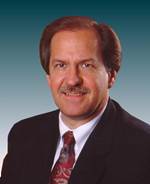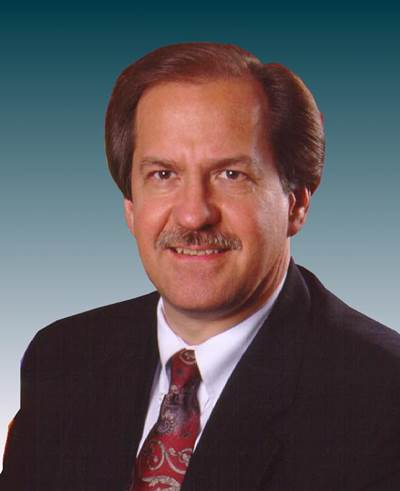Watching a half-century of progress in composites
Looking back on my experience in the composites industry, from my first job in 1961 as a free-lance secretary to Brandt Goldsworthy to my last job as a free-lance writer for Composites Technology and High Performance Composites, gives me an uncommon perspective.
Looking back on my experience in the composites industry, from my first job in 1961 as a free-lance secretary to Brandt Goldsworthy to my last job as a free-lance writer for Composites Technology and High Performance Composites, gives me an uncommon perspective on the remarkable changes that have occurred over the past 50 years. Since I don’t have access at this time to the actual files and information, the following review is one of memory, and CT welcomes your additions and corrections to these recollections.
First, I recall that the past was not “composites,” it was “fiber reinforced plastic”; not “composites manufacturing” but “FRP fabrication.” It was mostly fiberglass and polyester or vinyl ester resin; early epoxies and carbon fibers were difficult to work with. “Thermoplastics” was just a gleam in the eye of the U.S. Air Force, and engineers at Wright Patterson Air Force Base (Dayton, Ohio) pursued this goal through several research projects in the 1960s and 1970s. Today, nearly every conceivable combination of advanced materials is processed by nearly every composites manufacturing technology. Nonwoven stitched fabrics are reliable and 3-D fabrics with z-axis structural strength are probably the trend in the future.
Pultrusion. In my memory and experience, the early pultrusion processing relied on open resin baths — aptly named because they resembled actual bathtubs — to wet-out fiberglass roving before the roving bundle entered the heated die for cure. Workers (all men, then) leaned over the tub without any protection from resin fumes. When this practice was first deemed hazardous to one’s health due to styrene and other volatile organic emissions (VOCs), and workers were asked to wear protective clothing, the men often rebelled and owner-manufacturers had to insist on compliance. Things have certainly changed in this area! Not only is the requirement for protection well accepted, now, but pultruders and resin producers alike have committed every possible resource to developing new processing technologies that reduce the perceived hazards and complying with complex new regulations. Consequently, resin wet-out technology has minimized open bathtubs to breadbox size, virtually enclosed containers with the only openings those for the roving entrance and exit. Any remaining emissions are drawn off into scrubbers that further clean the air before venting it outdoors. Going a step further, pultruders more recently began injecting resin directly into the die, which has resulted not only in reduced emissions but improved wet-out and physical properties. Not to be outdone, resin producers have driven extensive (and expensive) research that has reformulated resin chemistries, bringing to fruition the lowest possible VOC emissions. What will the future bring? Already pultruders are making pultrusion of therm-oplastic resins a reality, which produces no VOCs at all.
In the die curing area, the former Glastrusions Inc.’s pioneering Glastruder system used radio frequency (RF) waves to preheat the wet bundle before it entered the die (a system that in its infancy opened garage doors all over town). Preheating gave a leg-up to cure cycles, optimizing the time/temperature curve and increasing pull-production rates. Strongwell Corp. (Bristol, Va.), now owner of the Glastrusions technology, still uses RF precure for some applications.
An interesting pultrusion application that never came to fruition was a continuous pipe-laying machine designed by Brandt Goldsworthy and E.E. “Tiny” Hardesty. It was developed to lay pipe on the seabed across the Catalina channel from Long Beach (Calif.) to Avalon to supply potable water from the mainland to dry Catalina Island. This looked very doable technically, but was abandoned for other reasons (which have not remained in my memory banks). Certainly a feasible technology for the future, and the extensive work that was done on the design is probably available in the Goldsworthy archives.
Early pultrusion processing parameters were determined largely based on operator experience and intuition. Today, as highlighted in the European Pultrusion Technology Assn. (EPTA) conference in Rome, March 2008, this is undergoing a huge change (see “Learn More,” at right). This formerly trial-and-error art form is rapidly undergoing transformation to a computer-driven production manufacturing science. Pultruders today are increasingly turning to finite element analysis (FEA) in designing load-bearing structures and employing sophisticated time/temperature/pressure controls for consistent quality control. The future also needs reliable and affordable inline inspection technology. As recently noted (see "Learn More”) by Joe Sumerak of Sumerak Pultrusion Resource International (Oakwood Village, Ohio), “In other industries … vision systems that monitor product dimensions and cosmetics and sound an alarm when defects are detected in high-speed, automated processes are commonplace. Surely, if inspecting components at 100 ft/min (30.48 m/min) is possible, then inspecting a pultruded profile at 3 ft/min (0.91 m/min) is possible as well, with a properly applied off-the-shelf technology.”
Filament winding. One of Brandt Goldsworthy’s early ventures was a box-winding machine, designed and built by Brandt and Denny Franks. This was even before my time, but the following story was related to me by Bill Johnson, the electrical engineer: The machine had been debugged and was working well, winding box-shapes. Brandt sold the idea to a customer and invited him to see the machine at work. Everything was going well and Brandt was expounding on its advantages and potential (moneymaking) applications when the machine made a loud screech and threw the box at them. End of sale, end of box-winder. Another unsuccessful early Goldsworthy innovation was a so-called racetrack machine, which wound nearly 0° longitudinals end-to-end around a mandrel. In this design, the winding head raced in an oval track around the mandrel as it rotated. Usually the winding head just traverses the length of the mandrel while the mandrel rotates. In the so-called racetrack winder, it traveled all the way around the length of the mandrel. I think the customer was General Electric, but I don’t recall the intended application. It seemed to work well when I saw it in action, but somehow I think it never quite achieved its promised efficiency.
These and other early filament winding machines were driven by electro-mechanical systems. However, around 1964-65, the fledgling Goldsworthy Engineering contracted with Thiokol (at Redstone Arsenal, as I recall) to build the first winding machine that used a numerical punched-tape control system. Its purpose was to wind a casing over solid rocket propellant. The completed machine was installed in a concrete bunker, with the controls on the outside for operator safety. Early computers were unequal to the programming job, and a single Thiokol engineer (first name, Jim, I don’t recall his last name) spent hours manually analyzing the job spec and designing the critical punched-tape program. No computerized finite element analysis. No computer modeling. Just a man and his slide rule and calculator, working through the night. Filament winding controls were a headache for many years, but in their usually persistent fashion, composites entrepreneurs pursued their goal and, today, consistent automated winding is a given.
Now, filament wound rocket motor cases are common, shafts, rods and rollers, housings and valves and even large storage tanks are all commonly made by filament winding glass, carbon or aramid fiber and polyester, vinyl ester or epoxy resins — and thermoplastics are in the works and probably will play a large role in filament winding’s future. Although lights-out winding is not being done today, it is probably feasible, given the level of software and control sophistication that has been developed for this ubiquitous process.
Toward the end of the Vietnam War, the Army contracted with Goldsworthy to design and build a continuous, automated tank-winding machine to wind storage tanks on site behind the front lines. A prototype was built and we successfully erected at least one tank (which was still standing at Fort Belvoir a few years ago). Continuous onsite tank winding is an accepted technology at present, especially in chemical and other corrosion-resistant facilities.
Another Goldsworthy development was a filament wound monolithic carbon-fiber/epoxy fuselage/pressure vessel proposed in the mid-1980s to Wichita, Kan.-based Beech Aircraft as part of a design study for the Beech Starship carbon composite business jet. According to Rob Sjostedt, who was then Goldsworthy Engineering’s program manager for subcontract work performed for the Starship, “Beech contracted for a prototype fuselage barrel test section in this design, which was filament wound with integral geodesic frame stiffeners and diagonal windows. At the time, this was such an innovative design, Beech went with a filament wound honeycomb sandwich configuration for the early Starship developmental articles. Ultimately, Beech certified a hand layed-up sandwich construction fuselage.” Some 20+ years later, Boeing is winding fuselage sections using prepreg tape in a modified ATL process for its 787 Dreamliner; the monolithic sections are then joined to construct the full fuselage. The future will surely go in this direction, with other commercial aircraft using this proven pressure vessel technology for safe passenger fuselages.
From the past to the present in my memories is certainly a giant leap in composites technology and applications. It’s difficult to even comprehend the advances that have been made in this time period from the struggle to pultrude ladder rail channels and filament wind tool handles — to the manufacture of commercial aircraft. Having witnessed all this, my admiration for composites entrepreneurs such as Brandt Goldsworthy is enormous; they took on the Goliath traditional materials industries, convinced of the potential and working steadily to prove the worth and advantage of these remarkable man-made materials. They have accomplished tremendous advances in applications, in materials and in process technology — to an extent almost unbelievable in the space of less than 50 years. I thank them and honor them.
Related Content
PEEK vs. PEKK vs. PAEK and continuous compression molding
Suppliers of thermoplastics and carbon fiber chime in regarding PEEK vs. PEKK, and now PAEK, as well as in-situ consolidation — the supply chain for thermoplastic tape composites continues to evolve.
Read MoreComposite resins price change report
CW’s running summary of resin price change announcements from major material suppliers that serve the composites manufacturing industry.
Read MoreNovel composite technology replaces welded joints in tubular structures
The Tree Composites TC-joint replaces traditional welding in jacket foundations for offshore wind turbine generator applications, advancing the world’s quest for fast, sustainable energy deployment.
Read MoreMaterials & Processes: Tooling for composites
Composite parts are formed in molds, also known as tools. Tools can be made from virtually any material. The material type, shape and complexity depend upon the part and length of production run. Here's a short summary of the issues involved in electing and making tools.
Read MoreRead Next
Pultruders need some self-control
Pultrusion veteran Joe Sumerak argues that in today’s more-competitive global marketplace, pultruders can no longer afford to overprice their products to compensate for process and supervision inefficiency.
Read MoreComposites end markets: Energy (2024)
Composites are used widely in oil/gas, wind and other renewable energy applications. Despite market challenges, growth potential and innovation for composites continue.
Read MoreFrom the CW Archives: The tale of the thermoplastic cryotank
In 2006, guest columnist Bob Hartunian related the story of his efforts two decades prior, while at McDonnell Douglas, to develop a thermoplastic composite crytank for hydrogen storage. He learned a lot of lessons.
Read More
















.jpg;maxWidth=300;quality=90)












